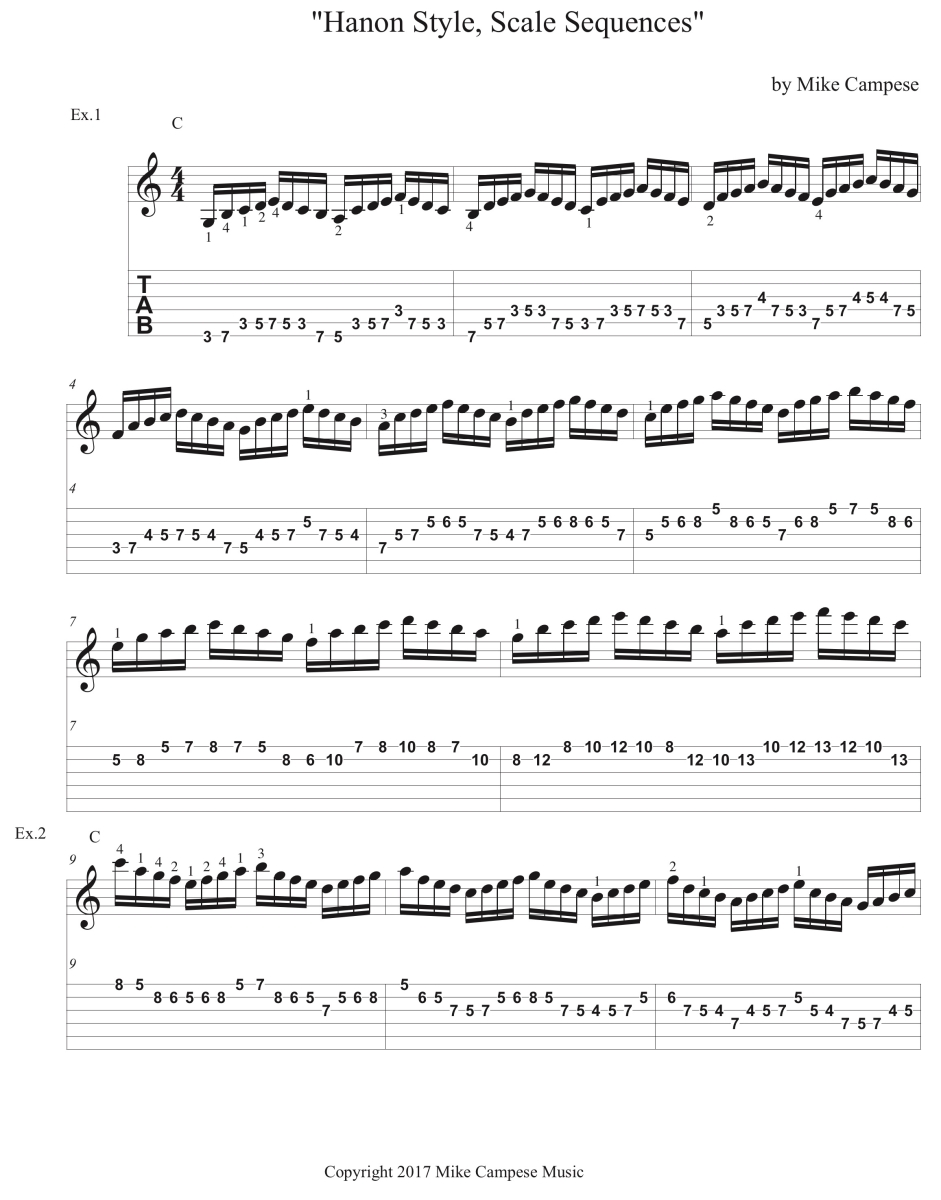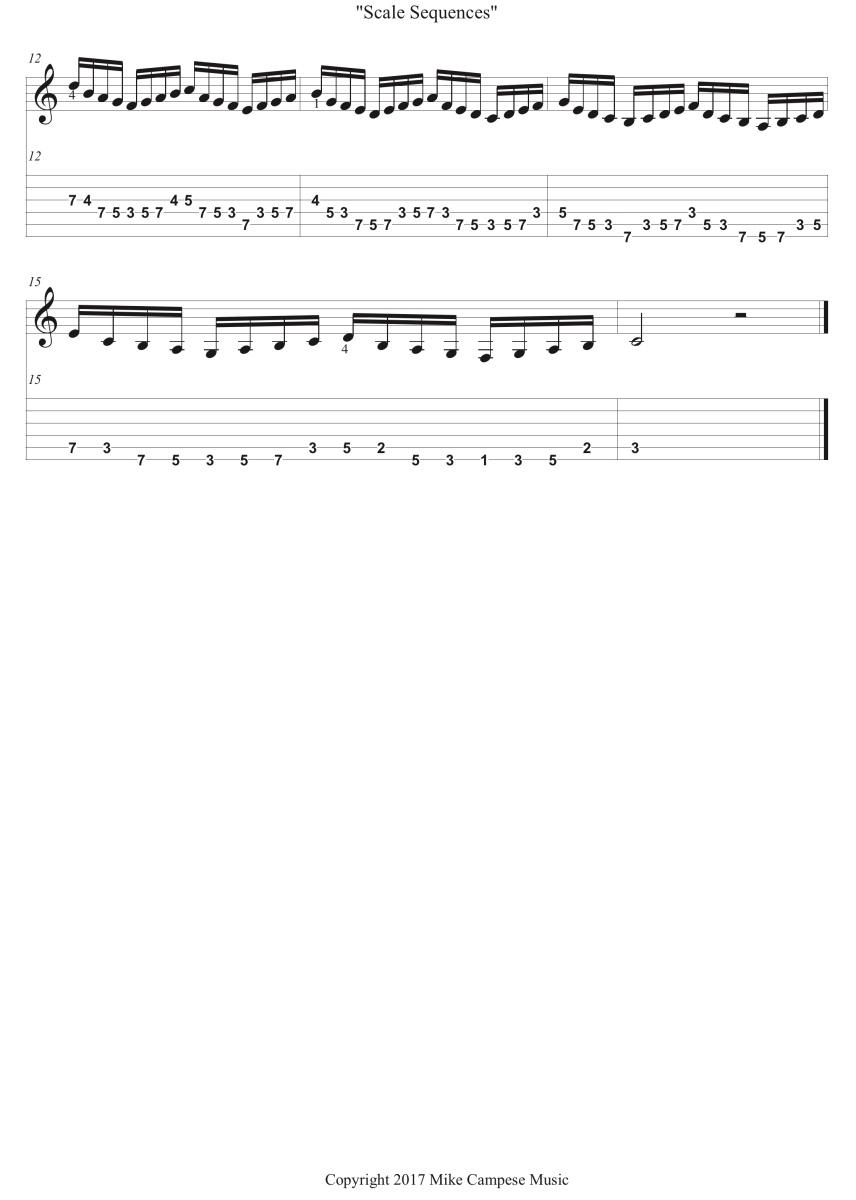Welcome back! This lesson will help keep your fingers in shape. I was inspired to write this lesson because I have been mixing my new album. I'm sure you all know that it would be great to have your instrument in your hands at all times, but it can be tough at times.
In this lesson I will be showing you some scale sequences that are great for your dexterity and precision. These sequences are in the Hanon style, The Virtuoso Pianist, and I applied the same concept to the guitar. It is pretty simple, you are just taking a mathematical pattern and moving it through the scale, like any scale sequence. The patterns in this lesson are using 8 notes and just repeated off of each scale tone. You can pick any series of intervals and make up sequences. These types of patterns will keep your hands in shape - and the most important thing is to make it musical. You wouldn't want to play these too long in a solo, just small sections. They are great for practice and they will help keep your fingers in shape. Let's dig in!
Example 1 is just an 8-note sequential pattern in C major, beginning on G that moves up the scale. You can consider this a G Mixolydian mode if you emphasize the G. You can assign each scale tone with numbers in intervals, for example (1, 3, 4, 5, 6, 5, 4, 3 ). This same pattern is applied to each scale tone and works with any scale. Be sure to alternate pick.
MP3 - Hanon Style, Scale Sequences - Example 1
Example 2 is the same 8 note sequence as the previous example, but it is descending down the neck and it is in the same scale. Try taking this same pattern on 2 strings at a time and move it around the neck.
MP3 - Hanon Style, Scale Sequences - Example 2


OK, that is it for now! As always, please experiment and make up your own ideas, and be sure to visit www.mikecampese.com for the latest news, updates and album information.
Mike Campese is an all-around music performer, session artist and teacher competent in many musical styles, electric and acoustic. He has studied at G.I.T. (Honors Graduate), and with Paul Gilbert, Norman Brown, Stanley Jordan, Scott Henderson and Keith Wyatt.